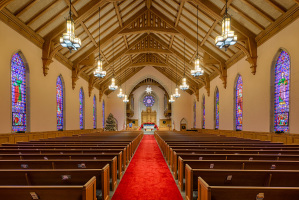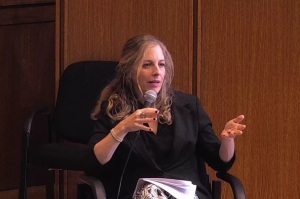Authors Document Explosion of Multi-Site Churches
Megachurches aren't the only worship houses launching multi-site campuses.
Although the multi-site movement was championed by big box churches, the phenomenon has spread to smaller communities.
"Multi-site (one church in two or more locations) is no longer just for a church of 2,000 or 5,000 or 10,000," said Geoff Surratt, co-author of A Multi-Site Church Road Trip, in a recent episode of Leadership Network's "The Show."
"We see churches as small as two or three hundred weekend attenders starting to launch new campuses," said Surratt, countering early criticisms that the multi-site movement was about megachurches launching more megachurches.
Surratt, who serves as pastor of Ministries at Seacoast Church in South Carolina, co-wrote the newly released book with Greg Ligon, vice president of Church Innovations at Leadership Network, and Warren Bird, research director at Leadership. The three visited dozens of innovative multi-site churches across the nation to document how the movement has morphed over the past several years.
It's been only three years since the authors released The Multi-Site Church Revolution but in that short time span they've seen the movement explode.
Multi-site churches are in nearly every major U.S. city and state, according to the book, and almost one in ten Protestant worshippers attend a multi-site church in the United States or Canada.
Up from 300 in the year 2000, there are currently 3,000 multi-sites in the country. Among megachurches, 37 percent reported being multi-site in 2008, up from 27 percent in 2005. At the same time, average seating capacities in megachurches have largely remained the same, growing only minimally from 1,709 to 1,794.
But again, you don't have to be a megachurch to go multi-site, the authors stress.
"We've visited enough churches of all sizes, and heard accounts of still more, to affirm with confidence that a healthy church with regular attendance (not membership) of two hundred or more can often become multi-site with an outcome that greatly increases the number and quality of disciples it makes," they state in A Multi-Site Church Road Trip.
And multi-sites do make disciples, they note.
Some critics argue that multi-site churches produce spectators rather than disciples and leaders, but from their experience disciple making does occur.
"In fact, multi-site churches do not survive long unless they put feet to their words about developing the people of God into leaders who reproduce themselves through others," the authors write. "If multi-site churches don't empower God's people for ministry, they fail."
Addressing another concern some have raised over the multi-site approach, Bird refutes the claim that multi-sites make Church into a show and do not connect people to the community. Although it may happen, the co-author has been unable to find any evidence that the typical multi-site with a campus pastor role places less emphasis on community than do regular, single-site churches.
"In our observations and conversations, we've learned that multi-sites must build community or they die," he writes in the book.
Bird also doesn't agree with critics who say video teaching replaces the personal relationship between preacher and local congregation. Though an appropriate concern, Bird questions whether a personal relationship with the preacher is a reality for most churchgoers.
"As a teen, ... I rededicated my life to Christ at the conclusion of a message from my pastor, but I did not have a personal relationship with him," he writes.
"What matters, it seems, is not so much that the preacher knows me personally as that the teacher's message is biblically sound, applied in a way I can understand. Then hopefully the church has altar counselors, Sunday school teachers, youth group leaders, or other on-site people ... to help disciple those who respond to the message."
Multi-site, the authors remind readers, is not really a new phenomenon. It's actually all about the 2,000-year-old challenge of reaching people and making disciples, "just with a different wrapper on the package," they say.
Looking into the future of the multi-site movement, the authors predict: international campuses will help transform approaches to missions; some multi-site churches will go double-digit even triple-digit in their number of campuses; Internet campuses will be accepted as legitimate; and a few multi-site churches (those that use centralized teaching) will become mini-denominations.



























